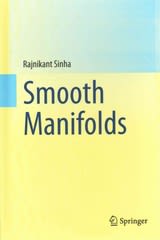Question
Directions : Use the following theory and research question to complete the activity questions below. Edwin Sutherland (a renowned criminologist) came up with Differential Association
Directions: Use the following theory andresearch questionto complete the activity questions below.
Edwin Sutherland (a renowned criminologist) came up with Differential Association theory. While there are many components to his theory, he basically argued people learn criminal behavior (e.g., the values, attitudes, techniques, and motives for such behavior) through interactions with others.
As a budding criminologist, you examine the followingresearch question:Are Ellensburg youth who associate with other delinquent youth more likely to become delinquent themselves?
1. Does the research question use nomothetic or idiographic explanation? How do you know?
2. Does the research question use inductive or deductive reasoning? How
do you know?
3. What is the unit of analysis in this study?
4. What are the two concepts (i.e., the abstract versions of our variables) in this theory?
5. Which of the above concepts will represent the dependent variable (effect)?
6. Which of the above concepts will represent the independent variable (cause)?
7. What would be a good way tomeasurethe DEPENDENT variable?
- Hint: You will need to 1) CONCEPTUALIZE and 2) OPERATIONALIZE the DV.
- Step 1 = Defining what the concept means to you
- Step 2 = Quantifying or clarify how the concept will be measured
8. What are theattributesof your dependent variable?
9. What is thelevel of measurementfor your dependent variable?
10. What would be a good way tomeasurethe INDEPENDENT variable?
- Hint: You will need to 1) CONCEPTUALIZE and 2) OPERATIONALIZE the IV.
- Step 1 = Defining what the concept means to you
- Step 2 = Quantifying or clarify how the concept will be measured
11. What are theattributesof your independent variable?
12. What is thelevel of measurementfor your independent variable?
13. Use the variables you have created to type out ahypothesis, or testable statement of the relationship between two variables.
14. What is thedirection of the relationshipin your hypothesis (i.e., positive or negative)?
15. If you designed a study to test this hypothesis, how would you account for the "time dimension" in your design? In other words, would you decide to use a cross-sectional study or a longitudinal study? Why? Would your study be prospective or retrospective? What are the pros and cons of either choice for this study?
Step by Step Solution
There are 3 Steps involved in it
Step: 1

Get Instant Access to Expert-Tailored Solutions
See step-by-step solutions with expert insights and AI powered tools for academic success
Step: 2

Step: 3

Ace Your Homework with AI
Get the answers you need in no time with our AI-driven, step-by-step assistance
Get Started


